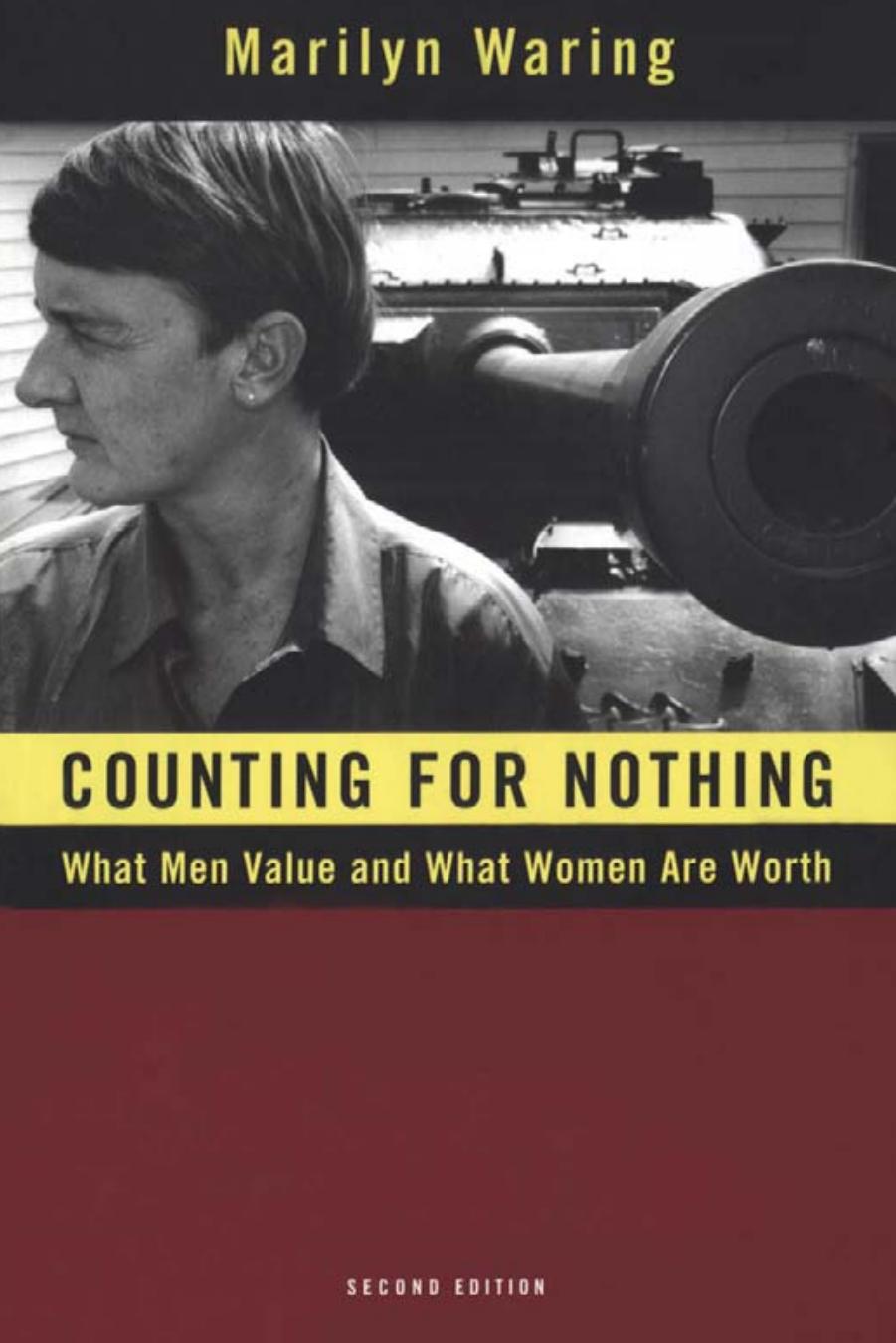Counting for Nothing: What Men Value and What Women are Worth by Marilyn Waring

Author:Marilyn Waring [Waring, Marilyn]
Language: eng
Format: azw, pdf
Publisher: University of Toronto Press, Scholarly Publishing Division
Published: 1999-05-10T16:00:00+00:00
Poverty and the Economy: The Unaccounted-for Costs
In the late twentieth century, the greater number of the casualties and victims of war are not the military but “civilians” — that is, overwhelmingly, women and children. In the late twentieth century, the greater number of casualties and victims of the market are not the workers but the “economically inactive” — that is, overwhelmingly, women and children.
Over 100 million people in sub-Saharan Africa suffer from hunger and malnutrition. Per capita food production has dropped by some 20 percent over the last twenty years. While the population increased annually by 3 percent, food production merely increased by 1.2 percent. Grain imports absorbed 20 percent of total foreign exchange earnings of sub-Saharan Africa.
Poverty kills. It kills faster and, currently, on a higher level than war and nuclear militarisation. It kills more rapidly than the environmental devastation of the world and the pollutant environments of workplaces around the world.
If there were to be nuclear war, it would be genocide. But we don’t need nuclear war in order to experience genocide. Neglect of the people and the human condition by governments is, on its current scale, genocidal. And as in war, the largest number of poverty’s victims are likely to be civilian women and children — the “use value” part of the population.
All too often in public opinion, I hear an easy assumption that, in countries such as Ethiopia, resources are diverted from meeting human needs because of a lack of democracy. Let’s examine the figures from developed nations, the nations that set out to lead the world in democracy.
In the United States, twelve times as many poor children die in fires as do nonpoor children. Eight times as many poor children die of disease as nonpoor children. A study in the state of Maine, which is, incidentally, 98 percent white, says whatever cause of death you name, you will find that more poor children die of it, more often, than nonpoor children.
Theresa Funiciello, a welfare rights organiser in the United States, writes, “By almost any honest measure, poverty is the number one killer of children in the United States. Doctors don’t say so, at least not in so many words, because poverty isn’t a medical affliction — it is an economic and social one. But it kills just the same.”13
In New York City, 40 percent of children — 700,000 of them — are living in families that the government classifies as poor. Among them, 10,000 do not have homes of their own and live in shelters for the homeless. Still others suffer from social disorders related to poverty: 3,000 children are born addicted to drugs each year, and 12,000 are removed to foster homes because of abuse or neglect. The greatest victims of poverty continue to be among minorities — blacks and Hispanics — and among single and unwed mothers.14
In 1985 the official estimates of the number of starving in the United States was 34 million people. The American Federation of State, County, and Municipal Employees
Download
Counting for Nothing: What Men Value and What Women are Worth by Marilyn Waring.pdf
This site does not store any files on its server. We only index and link to content provided by other sites. Please contact the content providers to delete copyright contents if any and email us, we'll remove relevant links or contents immediately.
International Integration of the Brazilian Economy by Elias C. Grivoyannis(99511)
The Radium Girls by Kate Moore(11978)
Turbulence by E. J. Noyes(7983)
Nudge - Improving Decisions about Health, Wealth, and Happiness by Thaler Sunstein(7662)
The Black Swan by Nassim Nicholas Taleb(7064)
Rich Dad Poor Dad by Robert T. Kiyosaki(6519)
Pioneering Portfolio Management by David F. Swensen(6261)
Man-made Catastrophes and Risk Information Concealment by Dmitry Chernov & Didier Sornette(5958)
Zero to One by Peter Thiel(5736)
Secrecy World by Jake Bernstein(4703)
Millionaire: The Philanderer, Gambler, and Duelist Who Invented Modern Finance by Janet Gleeson(4425)
The Age of Surveillance Capitalism by Shoshana Zuboff(4253)
Skin in the Game by Nassim Nicholas Taleb(4208)
Bullshit Jobs by David Graeber(4143)
The Money Culture by Michael Lewis(4141)
Skin in the Game: Hidden Asymmetries in Daily Life by Nassim Nicholas Taleb(3964)
The Dhandho Investor by Mohnish Pabrai(3729)
The Wisdom of Finance by Mihir Desai(3699)
Blockchain Basics by Daniel Drescher(3544)
